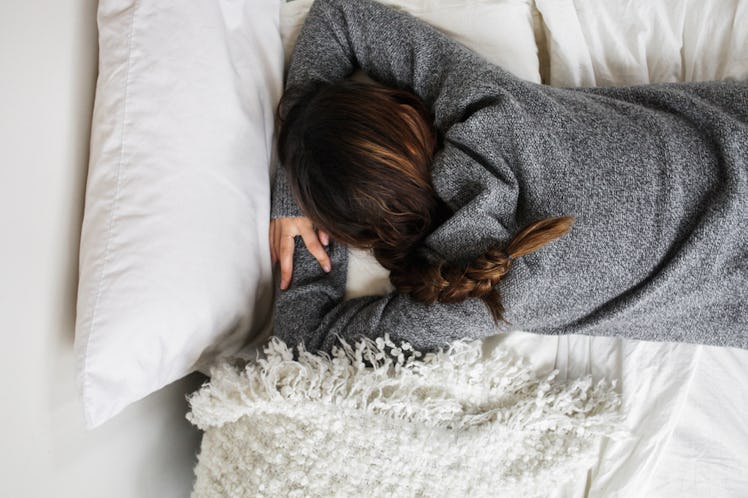
Science Says This Is How Long Your Nap Should Be, So Plan Your Snooze Wisely
Everyone loves a nice, deep, long nap. On the days that you can afford to snooze away the afternoon, there's nothing better than curling up underneath a blanket and letting yourself doze off. I've been known to nap for multiple hours in the afternoon when I can, although some might argue that it's no longer a nap at that point. Napping is great for your body, but when it starts to interfere with your sleep cycle, you might begin to wonder how long naps should be, and whether you're even doing it right.
Some people don't enjoy napping to begin with and can get by just fine with their normal sleep routine (huh, must be nice). But others (ahem, hi, it me) need a little bit more of an energy kick when they're lagging in the early afternoon, and there's nothing wrong with taking advantage of a lazy Saturday by clocking in some extra shut-eye.
If you fall into the latter group of people, then you probably want to know whether or not you're napping correctly — and yes, there are correct and incorrect ways to catch some extra sleep in the middle of the day.
Ideally, a nap shouldn't last more than 30 minutes. If you snooze any longer, you might not feel as well-rested as you were hoping.
When you're napping, you should always keep your REM cycle in mind and try to plan your nap in roughly 30-minute segments. Your REM cycle — aka the deepest phase in your overall sleep cycle — can last for anywhere from 90 to 110 minutes before starting all over again, and it's made up of five stages, the last of which are the absolute deepest.
The one thing you absolutely don't want is to wake up from your nap during a deep-sleep stage, because you'll end up feeling totally groggy and exhausted, which is probably not your intention. Ideally, a midday nap should only enter the light stages of your REM cycle, and you should wake up before you go any further.
Sleeping less than an hour will guarantee you don't hit those deeper stages of your REM cycle.
This is where the magic of a "power nap" comes in, which is a nap that only lasts about 10 to 15 minutes, and has been scientifically proven to increase alertness and cognitive performance immediately after waking up. A power nap is a great option for people who don't have multiple hours to devote to relaxation in the afternoon, and you can even pull off a power nap in pretty subtle places, like a seat on a commuter train.
But there's something you need to be careful about when planning your nap time, especially if it's in a short time-frame: how long it actually takes you to fall asleep in the first place, which is different for everyone. Think about it — you don't want to spend more time trying to fall asleep than actually being asleep, as that would probably stress you out more, and obviously defeat the whole purpose of the nap.
Of course, even when you're exhausted, it can be hard to just switch your brain off on command in the middle of the day. So, if you need to relax ASAP before a quick midday nap, try doing some deep breathing exercises to calm your mind and lower your heart rate, which will help you fall asleep faster and more easily. Ideally, you want to get yourself to a cool, dark environment that encourages sleep, rather than a loud, noisy, or otherwise uncomfortable spot.
Napping is a great way to gain some energy in the middle of the day, but ideally, it shouldn't interrupt the quality of your nighttime sleep.
Napping for too long, or at too late of a time in the day, might actually interfere with your sleep cycle, thus making you more tired the next day, and before you know it, this could turn into a vicious cycle, in which you constantly try to catch up on sleep, but never quite get there.
Treat your naps like a nice supplement to the occasional low-key day, rather than a crucial ingredient to your wakefulness. Think of it as your ultimate Sunday treat.